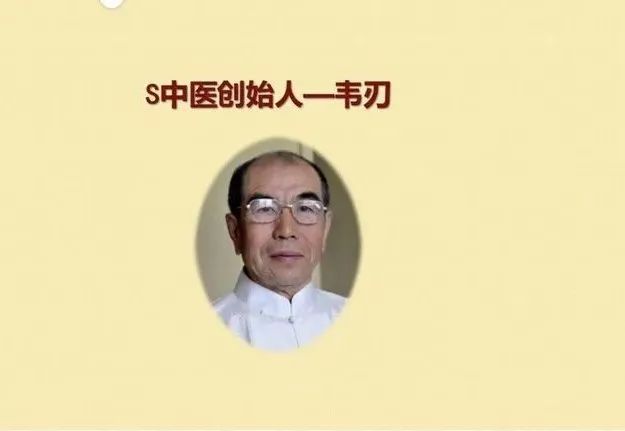 The meridians are the channels through which Qi and blood circulate in the human body. The cun kou mai (寸口脉, cun pulse), as part of the shou tai yin fei jing (手太阴肺经, Hand Taiyin Lung Meridian), is naturally filled with Qi and blood. Therefore, studying the pulse fundamentally involves examining the state of Qi and blood within it. The cun kou mai has historically been used for diagnosing diseases because the conditions of the body’s organs and their Qi and blood can be reflected in this pulse, allowing practitioners to determine the root cause of illnesses based on these manifestations.
The meridians are the channels through which Qi and blood circulate in the human body. The cun kou mai (寸口脉, cun pulse), as part of the shou tai yin fei jing (手太阴肺经, Hand Taiyin Lung Meridian), is naturally filled with Qi and blood. Therefore, studying the pulse fundamentally involves examining the state of Qi and blood within it. The cun kou mai has historically been used for diagnosing diseases because the conditions of the body’s organs and their Qi and blood can be reflected in this pulse, allowing practitioners to determine the root cause of illnesses based on these manifestations.
Floating and Sinking
Yang is floating while Yin is sinking; this is the inherent nature of Yin and Yang.
How do we determine floating and sinking?
Floating pulse: Strong with light pressure, weak with heavy pressure, surface greater than interior.
Sinking pulse: Weak with light pressure, strong with heavy pressure, interior greater than surface.
In summary, this means that a pulse can be felt with relatively light pressure, while a sinking pulse requires heavy pressure to feel its beat. It can also be understood as floating on the surface of the body while sinking within.

In Traditional Chinese Medicine, Master Wei does not discuss the correlation of pulse with organs, such as the left cun (寸) being related to the heart and the left guan (关) being related to the liver and gallbladder, etc. The following text is merely to facilitate understanding of the normal variations in pulse for individuals, adding these organ associations for easier comprehension and memory. In Traditional Chinese Medicine, the focus is solely on whether the pulse is “ping mai” (平脉, normal pulse) and not to get caught up in the so-called six meridian differentiation, as different systems have different logics, although the ultimate essence is interconnected.
Normal floating and sinking of the left chi (尺):
The kidney is the water organ, its nature is sinking, but the kidney water contains precious kan yang (坎阳, hidden Yang), hence it is sinking with floating. Sinking with floating means that when pressing down with weight, one can feel the pulse energy rising, which indicates that “although the Yin body is sinking, it contains the rising intention within, thus sinking with floating.” Therefore, a normal person’s left chi pulse is sinking and moist, feeling the Qi and blood flowing smoothly and abundantly.
Normal floating and sinking of the left guan (关):
The liver wood arises from kidney water, and the state of wood Qi is the initial Yang sprouting in liver blood. The Huang Di Nei Jing (《黄帝内经》, Yellow Emperor’s Inner Canon) states that “the Jueyin often has more blood and less Qi,” referring to the condition of the Jueyin liver wood having more blood and less Qi, thus both the liver and kidney are sinking. However, the warming Yang in wood is more abundant than that in kidney’s kan yang, making the floating nature of the liver more pronounced than that of the kidney. The liver wood can reach upward with the spleen earth, and the wood Qi rises to form heart fire, during which the wood Qi shows its inherent ability to rise, hence the liver pulse is often longer than other pulses, thus a normal person’s left guan pulse is sinking and long, giving the impression that although the pulse is sinking, it has a very clear tendency to rise towards the left cun.

Floating and sinking of the left cun (寸):
The liver wood rises with the spleen earth to reach heart fire, which has a strong upward inflammatory nature. Although the heart has a separation from Yin, it cannot change its floating and dispersing nature, thus a normal person’s left cun pulse is floating and widely dispersed. The left cun pulse gives the impression that Qi and blood are all eager to express themselves outward, much like a group of adorable children in a classroom eagerly trying to answer the teacher’s questions. The presence of the heart’s separation from Yin causes the heart pulse to float yet not overly so, with a hint of gentleness in the rising and floating.
When first learning about Traditional Chinese Medicine, one might mechanically think that the cun, guan, and chi pulses are similar, except that the guan pulse is slightly larger. However, over time and with the accumulation of cases, one will discover that each pulse location has its differences, and seasonal changes will also bring about variations. For instance, in winter, the pulse may be slightly more sinking; these changes must be taken into account. Among these variations, it is the more abnormal pulses that we need to address.
From the kidney pulse to the liver pulse and then to the heart pulse, this process shows how Qi and blood transition from being concealed to rising. A healthy person’s left hand pulse transitions from the sinking and solid left chi to the floating and dispersed left cun. Therefore, when taking a patient’s left hand pulse, one should think of it as holding a rising Qi pulse. If the person being diagnosed is normal, then from the left chi to the left cun, it will present a scene of Qi rising and flowing smoothly. If the left hand pulse shows abnormalities, one should consider issues related to the rising of Qi. A common problem is that the liver wood is obstructed by the spleen earth’s dampness, causing Yang Qi to stagnate and the left guan pulse to be large. If Qi is trapped below, the left chi pulse may also be large; if liver Qi is long stagnant, wood cannot generate fire, leading to a deficiency of heart fire, and the left cun pulse will no longer be floating and large.

Practitioners must pay special attention to the left chi pulse of those with chronic illnesses. The left chi pulse reflects the kidney, and kidney Yang is the root of heart fire. The Yang Qi must be concealed within kidney water to continuously rise. If the Yang root appears, it may indicate that the condition of a chronic patient is about to deteriorate rapidly. This situation is akin to a tree whose roots, originally deep in the soil, are now severed, with only some remnants emerging from the ground, signaling that the tree is about to fall. At this point, the practitioner must use all possible methods to prolong the patient’s life and inquire about any unfulfilled wishes. The doctor does not possess the miraculous power to transform decay into divinity; all that can be done is to ensure that the patient does not leave with regrets.


